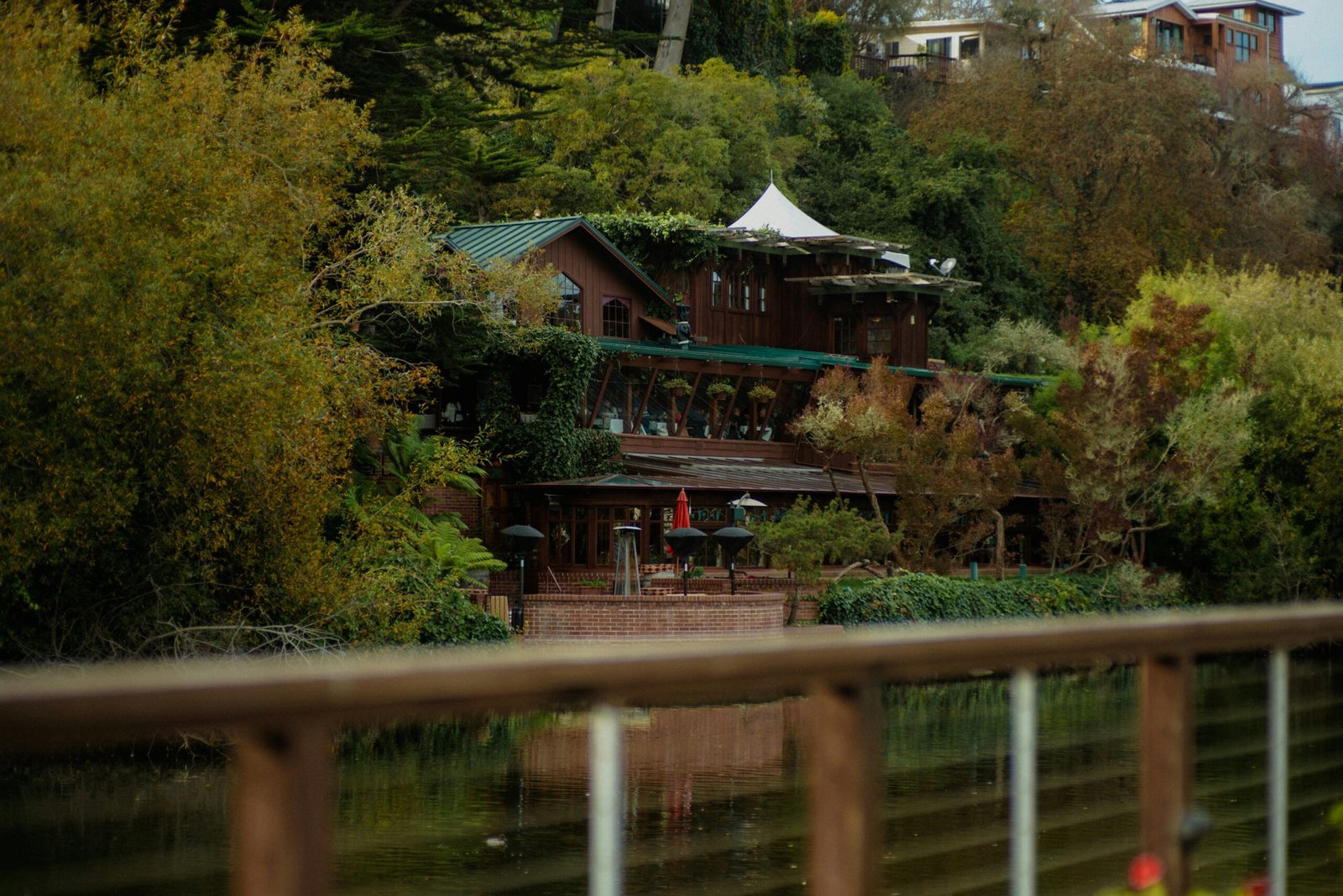Introduction to Eco-Friendly Travel in Scandinavia
Eco-friendly travel has gained significant attention in recent years as travelers increasingly seek to minimize their environmental impact while exploring new destinations. In the context of Scandinavia, this region stands out for its profound commitment to sustainable tourism practices. Countries such as Sweden, Norway, and Denmark have been pioneers in developing eco-conscious policies that promote responsible travel behavior among both locals and visitors. This commitment is not only reflected in their travel infrastructure but also in the natural landscapes that prioritize conservation and the protection of local ecosystems.

Scandinavia is well-known for its breathtaking natural beauty, with fjords, mountains, and vast forests that provide the perfect backdrop for environmentally friendly adventures. Tourists who choose to visit this stunning region can partake in various eco-friendly activities, such as hiking through national parks, cycling along scenic routes, and engaging in wildlife observation—all of which emphasize the importance of preserving the environment while enjoying its splendor. Sustainable accommodations are also readily available, with many hotels and lodges employing green practices to reduce their carbon footprint.
In this blog post, readers will discover the numerous opportunities that exist for eco-friendly travel within Scandinavia. From exploring renewable energy initiatives to supporting local communities through responsible tourism, the region provides an array of experiences that cater to environmentally conscious travelers. By choosing Scandinavia for their next adventure, individuals can enjoy unique and sustainable experiences that facilitate a deeper connection with nature, while also contributing to the preservation of the environment. As we delve deeper into the various aspects of eco-friendly travel in this remarkable region, it becomes apparent that Scandinavia is not just a destination but a model for sustainable travel that others can aspire to emulate.
The Rise of Sustainable Tourism in Scandinavia
The concept of sustainable tourism has gained significant traction in Scandinavia over recent years, reflecting a profound cultural shift towards environmental consciousness among both travelers and local businesses. This growing trend is attributed to various factors, including governmental policies aimed at promoting eco-friendly travel practices, local community initiatives, and an increasing awareness of the environmental impact of traditional tourism. Scandinavian countries, known for their stunning natural landscapes and commitment to sustainability, are at the forefront of these efforts, making them attractive destinations for the environmentally conscious traveler.
Governments in Sweden, Norway, and Denmark have implemented numerous regulations and incentives to encourage sustainable tourism. For instance, many national parks have introduced stricter guidelines to minimize the ecological footprint of visitors, ensuring that the natural environment remains preserved for future generations. In addition, financial support and grants are often available for businesses that adopt sustainable practices, encouraging the tourism sector to reevaluate their operational models. This proactive approach by authorities not only preserves the natural beauty of the region but also enhances the appeal of these destinations among eco-minded tourists.
Moreover, numerous local initiatives have emerged that emphasize sustainable travel experiences. These include eco-lodges, farm-to-table dining options, and guided tours that prioritize environmental education and conservation. As tourism operators increasingly recognize the importance of sustainability, many are integrating eco-friendly practices into their offerings. Statistics showing a rise in consumer demand for green travel options have further influenced this shift; a significant percentage of travelers are keen to support businesses that align with their values regarding the environment.
The combination of supportive governmental frameworks, grassroots initiatives, and evolving consumer behavior signals a robust transformation within the tourism industry in Scandinavia. Consequently, the region not only attracts visitors looking for adventure but also cultivates an environment where eco-friendly practices thrive, laying the foundation for a sustainable tourism model that other areas might emulate.
Eco-Lodges: Where Comfort Meets Sustainability
Scandinavia is renowned for its breathtaking landscapes, rich culture, and commitment to sustainability, making it an ideal destination for eco-conscious travelers. Eco-lodges in this region provide unique accommodations that meld comfort with environmentally responsible practices, allowing visitors to experience the beauty of nature while minimizing their ecological footprint.

One exemplary eco-lodge is the Juvet Landscape Hotel in Norway. This hotel boasts innovative architectural designs, with its minimalist cabins skillfully positioned to blend seamlessly into the surrounding scenery. Utilizing large glass windows, guests are treated to stunning views of the river and forest, fostering a deep connection with the natural world. The hotel’s use of locally sourced materials, such as timber and stone, not only reduces transportation emissions but also supports regional craftsmanship.
In Sweden, the Treehotel offers a distinctive experience, presenting treehouses that are elevated among the treetops. Each treehouse is individually designed by different architects, showcasing creativity and innovation. The eco-lodge employs sustainable building techniques and relies on renewable energy sources, such as solar panels, for electricity. This unique accommodation allows guests to enjoy nature up close while promoting environmental stewardship.
Diving deeper into Finland’s offerings, the Kakslauttanen Arctic Resort highlights sustainability through its construction of traditional igloos made from glass. Situated in the pristine wilderness, these igloos are designed to provide comfort while allowing guests to marvel at the Northern Lights. The resort utilizes energy-efficient heating systems and local resources, showcasing a perfect blend of comfort and eco-conscious practices.
All these eco-lodges exemplify how travelers can indulge in luxury while contributing to sustainable practices. By choosing such accommodations, visitors to Scandinavia can enjoy unparalleled comfort without compromising their commitment to protecting the environment. The integration of innovative designs, energy-efficient technologies, and local materials fosters an enriching experience that the eco-minded traveler will cherish.
Green Transportation: Navigating Scandinavia Sustainably
Scandinavia is celebrated for its commitment to sustainability, particularly in the realm of transportation. Tourists seeking eco-friendly travel options will find a wealth of choices designed to minimize carbon footprints while maximizing the experience of exploring the region’s stunning landscapes and vibrant cities. One of the most effective ways to traverse Scandinavia sustainably is through its extensive network of electric trains and buses. These transportation modes not only reduce greenhouse gas emissions significantly compared to traditional vehicles but also offer a comfortable means to enjoy the breathtaking scenery that this region is known for.
Electric trains connect major cities such as Oslo, Stockholm, and Copenhagen, allowing passengers to travel swiftly while maintaining a low environmental impact. Additionally, many buses operating on renewable energy further contribute to a greener travel experience. These services are not only efficient but also well-integrated into a larger public transportation system, making it easy for travelers to navigate between urban and rural destinations without reliance on personal vehicles.
The bicycle rental culture in Scandinavia is another excellent way to experience the region while promoting sustainability. Many cities have prioritized the development of bike-friendly infrastructure—comprising dedicated lanes, bike-sharing programs, and ample rental shops—that encourages both residents and visitors to explore the streets on two wheels. Cycling allows adventurers to discover hidden gems and enjoy the fresh air while reducing their ecological impact.
Furthermore, the development of pedestrian-friendly cities with well-maintained walking paths enhances the opportunity for sustainable exploration. The availability of extensive hiking trails linking various attractions not only fosters a connection with the natural environment but also encourages a lifestyle that is harmonious with nature. By choosing green transportation options, travelers can truly appreciate the beauty of Scandinavia while contributing to its preservation for future generations.
Nature and Wildlife Conservation Initiatives
Scandinavia is renowned for its breathtaking natural landscapes and rich biodiversity. To preserve these attributes, numerous conservation initiatives have emerged across the region, focusing on protecting wildlife and fostering sustainable travel practices. Notable organizations such as the Swedish Society for Nature Conservation and the Norwegian Institute for Nature Research actively engage in efforts aimed at maintaining the ecological balance and safeguarding endangered species. These organizations not only implement conservation programs but also raise awareness among local communities and travelers alike about the importance of protecting the unique environment.
National parks in Sweden, Norway, and Finland serve as essential sanctuaries for various flora and fauna while facilitating eco-friendly travel experiences. For instance, the iconic Abisko National Park in Sweden promotes sustainable tourism through controlled visitor practices and guided tours that minimize human impact on the ecosystem. Similarly, Norway’s Jotunheimen National Park emphasizes conservation through initiatives that encourage responsible hiking and outdoor activities, providing a blueprint for sustainable exploration in the mountains.
Travelers looking to make a positive contribution can engage with these conservation initiatives by participating in volunteer programs. Many organizations offer opportunities for visitors to assist with wildlife surveys, habitat restoration, and educational outreach, allowing them to immerse themselves in nature while promoting sustainability. Local eco-tours often include partnerships with conservation projects, enabling tourists to learn about the importance of preserving natural habitats while enjoying guided experiences in the stunning Scandinavian landscape.
Moreover, supporting local businesses that prioritize sustainable practices can have a significant impact on conservation efforts. From eco-friendly accommodations to organic dining options, travelers play an important role in aligning their choices with the region’s commitment to preserving its extraordinary environment. By actively engaging in and promoting these initiatives, travelers not only enhance their own experiences but also contribute to the long-term conservation of Scandinavia’s magnificent natural heritage.
Sustainable Food Tourism: Savoring Local Cuisine Responsibly
In recent years, sustainable food tourism has gained considerable traction among travelers, particularly in Scandinavia, where the emphasis on farm-to-table practices is evident. This approach not only fosters a deeper connection to local culture but also promotes environmental stewardship and supports the local economy. By choosing to dine at eateries that prioritize organic ingredients and sustainability, travelers can significantly reduce their carbon footprint while savoring the rich flavors of the region.
Local eateries in Scandinavia, such as restaurants focusing on seasonal menus and local produce, exemplify how food tourism can be sustainable. These establishments often source their ingredients directly from nearby farms, thereby minimizing transportation emissions and ensuring freshness. For instance, dining at a farm-to-table restaurant not only guarantees a meal prepared with the highest quality ingredients but also allows diners to experience authentic Scandinavian flavors in dishes that reflect the changing seasons.
Farmers’ markets further enhance the sustainable food tourism experience by connecting travelers with local producers. These markets offer a variety of organic fruits, vegetables, and artisanal products, allowing visitors to sample traditional Scandinavian foods while supporting local agriculture. Engaging with farmers not only enriches the travel experience but also fosters community ties and provides a deeper understanding of the region’s agricultural practices.
Traditional dishes, often rooted in centuries-old recipes, present another facet of sustainable food tourism. By choosing to indulge in local cuisine, travelers contribute to preserving culinary heritage and promoting the use of sustainably sourced ingredients. Embracing these sustainable dining options allows travelers to enjoy a more immersive experience while consciously participating in the local economy and advocating for sustainable agriculture practices.
Adventure Activities: Eco-Conscious Thrills
Scandinavia, renowned for its breathtaking landscapes and pristine natural environments, offers a multitude of adventure activities that prioritize sustainability and eco-friendliness. Engaging in these eco-conscious thrills not only provides an adrenaline rush but also fosters a deeper appreciation for the environment. Here are some noteworthy activities that adventurous travelers can partake in while minimizing their ecological footprint.
One prominent eco-friendly activity is kayaking. Paddling through the crystal-clear fjords and lakes of Norway or Sweden allows individuals to explore their surroundings in a peaceful manner, without the disturbance of motorized boats. Kayaking enables participants to closely observe the diverse marine life and stunning landscapes while minimizing their impact on these delicate ecosystems. Many eco-tour companies promote sustainable practices, such as using biodegradable materials and following designated routes that protect sensitive habitats.

Hiking is another popular adventure in Scandinavia, with trails ranging from leisurely walks to challenging treks. The concept of “allemannsretten,” or the right to roam, empowers individuals to explore the vast wilderness responsibly. By sticking to marked paths and respecting wildlife, hikers engage in an activity that emphasizes conservation. Guided hiking tours often educate participants about local flora and fauna, creating a connection that encourages environmental stewardship.
Wildlife watching is not only thrilling but serves as an excellent opportunity to observe animals in their natural habitats while promoting their protection. From witnessing the majestic Northern Lights in Lapland to spotting reindeer in Sweden, engaging in responsible wildlife observing can contribute to local conservation efforts. Tour operators that follow strict ethical guidelines ensure that animals are not disturbed, resulting in sustainable experiences that benefit both travelers and the environment.
These eco-friendly pursuits not only enrich travelers’ experiences but also contribute to the preservation of Scandinavia’s exceptional natural beauty. By participating in adventure activities that respect and nurture the environment, individuals can enjoy thrilling experiences while embracing their responsibility as global citizens.
Community Engagement and Learning Opportunities
One of the most enriching aspects of eco-friendly travel in Scandinavia is the emphasis on community engagement and learning opportunities. This approach fosters a strong relationship between travelers and the local cultures they visit, creating an authentic experience while promoting sustainable practices. Various initiatives and programs encourage visitors to participate in workshops, cultural exchanges, and ecotourism activities, allowing them to learn from locals while supporting their communities.
Workshops are an excellent way for travelers to immerse themselves in traditional crafts, culinary practices, or environmental conservation methods. For instance, Scandinavian artisans often offer workshops that teach skills such as woodworking, pottery, or weaving, where travelers can create a unique souvenir while learning about local techniques and heritage. These hands-on experiences not only enrich the traveler’s understanding of the culture but also provide tangible support to the community by promoting local craftsmanship.
Cultural exchanges, on the other hand, present an avenue for travelers to connect with local residents on a personal level. Programs that involve home stays, community dinners, or volunteer opportunities allow visitors to engage in meaningful conversations with locals, offering insights into their way of life, challenges, and aspirations. This interaction fosters mutual understanding and respect, nurturing a reciprocal relationship that benefits both parties.
Ecotourism programs in Scandinavia further highlight the commitment to sustainability while promoting community involvement. These programs offer guided nature walks, wildlife viewing experiences, or participatory conservation projects, allowing travelers to actively contribute to environmental preservation efforts. Participants learn about local ecosystems and conservation challenges, emphasizing the importance of protecting natural resources for future generations. Such initiatives showcase the essential link between community engagement and sustainable travel, enabling travelers to leave a positive impact on the places they visit.
Conclusion
As we have explored throughout this blog post, eco-friendly travel in Scandinavia offers a remarkable opportunity for travelers to engage in sustainable adventures that are not only rewarding for the individual but also beneficial for the environment. Scandinavia, characterized by its stunning landscapes, commitment to sustainability, and innovative approaches to tourism, stands out as a leading destination for those who prioritize eco-conscious travel. The countries within this region have made significant strides towards integrating green practices in their hospitality sectors, transportation systems, and outdoor activities.
The potential for growing sustainable tourism in Scandinavia is immense. With increasing awareness of climate change and environmental issues, more travelers are seeking experiences that align with their values. By choosing eco-friendly accommodations, participating in tours that support local communities, and engaging in conservation efforts, travelers can make meaningful contributions to preserving the natural beauty of this region. It is essential for travelers to be conscious of their choices, as every decision can impact the delicate ecosystems and communities they visit.
In light of this information, we encourage all readers to adopt an eco-friendly mindset when planning their next adventure in Scandinavia. By embracing sustainable practices, not only does one become part of a growing movement, but they also enhance their travel experiences through authentic interactions with nature and local cultures. Scandinavia’s forward-thinking approach to tourism serves as a compelling model for others worldwide, demonstrating that it is indeed possible to enjoy the wonders of travel while respecting and preserving our planet. Let us all aspire to be responsible travelers, ensuring that future generations can also create lasting memories in this breath-taking corner of the world.






